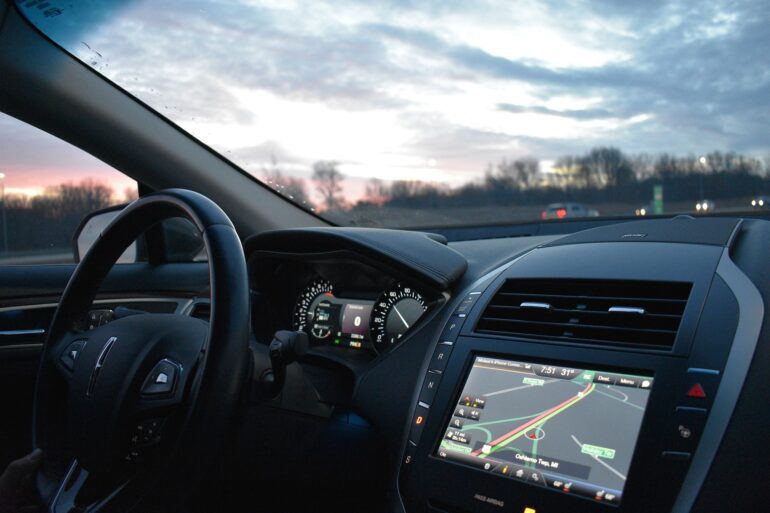TL;DR:
- MIT researchers present a groundbreaking machine learning approach for autonomous vehicle stabilization and obstacle avoidance.
- The new technique achieves a tenfold increase in stability and ensures safety while navigating treacherous terrains.
- By reframing the problem as a constrained optimization challenge, incorporating deep reinforcement learning, and combining it with existing engineering techniques, the researchers outperform previous methods.
- The approach holds promise for designing controllers for dynamic robots and assisting drivers in hazardous conditions.
- Reinforcement learning with safety and stability guarantees is crucial for deploying controllers in mission-critical systems.
Main AI News:
MIT researchers have recently unveiled an innovative technique that revolutionizes the way machines tackle intricate stabilization and obstacle avoidance problems, surpassing previous methods in terms of effectiveness. Lead author Oswin So and senior author Chuchu Fan presented this groundbreaking machine-learning approach, which empowers autonomous aircraft to navigate treacherous terrains with a remarkable tenfold increase in stability, enabling them to achieve their objectives while ensuring utmost safety.
The core challenge lies in the stabilize-avoid problem that autonomous aircraft encounter while striving to reach their destinations without colliding with obstacles or being detected by radar. Numerous existing AI methods fall short of overcoming this obstacle, greatly impeding their ability to safely fulfill their missions.
To confront this issue head-on, the MIT researchers devised a two-step solution. Firstly, they redefined the stabilize-avoid problem as a constrained optimization problem, enabling the agent to navigate and stabilize within a designated goal region. By incorporating these constraints, they ensured that the agent adeptly steered clear of obstacles.
The second step involved transforming the constrained optimization problem into the epigraph form, which is a mathematical representation solvable through a deep reinforcement learning algorithm. By surpassing the limitations of existing reinforcement learning approaches, the researchers successfully derived mathematical expressions tailored specifically to the system, skillfully amalgamating them with pre-existing engineering techniques.
To validate their approach, the researchers conducted a series of control experiments, considering various initial conditions. Impressively, their method achieved stabilization across all trajectories while maintaining impeccable safety standards, surpassing several baseline methods. In a thrilling scenario inspired by the iconic “Top Gun” movie, the researchers simulated a jet aircraft maneuvering through a narrow corridor close to the ground. Their controller astutely stabilized the jet, effectively preventing accidents or stalls and outperforming other baseline methods.
This groundbreaking technique bears tremendous potential for designing controllers for highly dynamic robots that demand both safety and stability guarantees, such as autonomous delivery drones. Furthermore, it could be seamlessly integrated into larger systems, assisting drivers in navigating perilous conditions. For instance, it could swiftly restore stability when a car skids on a snow-covered road.
The researchers envision empowering reinforcement learning with the safety and stability guarantees indispensable for deploying controllers in mission-critical systems. This approach marks a significant stride towards achieving this paramount objective. Looking ahead, the team intends to enhance the technique by accounting for uncertainties in optimization problem-solving and evaluating its performance when implemented on hardware, taking into account the dynamics of real-world scenarios.
Esteemed experts not directly involved in the research have lauded the MIT team for their remarkable progress in enhancing reinforcement learning performance in systems where safety takes precedence. The ability to generate secure controllers for complex scenarios, including a nonlinear jet aircraft model, holds immense implications for the field and beyond.
Conclusion:
The MIT researchers’ breakthrough in machine learning for autonomous vehicle stabilization and obstacle avoidance has significant implications for the market. This advancement addresses critical challenges faced by autonomous vehicles, allowing them to navigate complex terrains with increased stability and safety. The ability to achieve remarkable performance in scenarios where safety is paramount opens up opportunities for deploying autonomous vehicles in mission-critical systems.
This innovation also has the potential to enhance the development of highly dynamic robots and provide assistance to human drivers in navigating hazardous conditions. The market for autonomous vehicles and related technologies can expect a boost as this breakthrough paves the way for more efficient and secure systems in the field.

